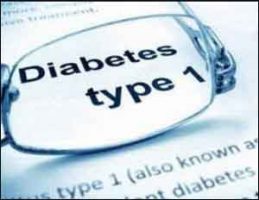- Home
- Editorial
- News
- Practice Guidelines
- Anesthesiology Guidelines
- Cancer Guidelines
- Cardiac Sciences Guidelines
- Critical Care Guidelines
- Dentistry Guidelines
- Dermatology Guidelines
- Diabetes and Endo Guidelines
- Diagnostics Guidelines
- ENT Guidelines
- Featured Practice Guidelines
- Gastroenterology Guidelines
- Geriatrics Guidelines
- Medicine Guidelines
- Nephrology Guidelines
- Neurosciences Guidelines
- Obs and Gynae Guidelines
- Ophthalmology Guidelines
- Orthopaedics Guidelines
- Paediatrics Guidelines
- Psychiatry Guidelines
- Pulmonology Guidelines
- Radiology Guidelines
- Surgery Guidelines
- Urology Guidelines
Type 1 diabetes: Diabetic ketoacidosis and hyperglycemic shock increases suicide risk

Patients with type 1 diabetes who are hospitalized either for hyperglycaemic (high blood sugar) coma or diabetic ketoacidosis are more likely to attempt suicide, finds a recent study.
The study was presented at the 2019 Annual Meeting of the European Association for the Study of Diabetes (EASD) held in Barcelona, Spain from 16-20 September 2019.
According to the study, the diabetes patients who were hospitalized with ketoacidosis were at 2.2 times increased risk for suicide while in patients hospitalized for hyperglycaemic coma the suicide risk tripled.
Diabetic ketoacidosis is a serious diabetes complication that develops when the body is unable to produce sufficient insulin. Insufficient insulin channels the body to break down fat as fuel, resulting in the buildup of acids in the bloodstream called ketones.
characterized by excess production of blood acids (ketones). Intravenous fluid is administered to the patient to replace extravascular and intravascular fluid and electrolyte losses. It also dilutes the levels of both circulating counterregulatory hormones and glucose. The symptoms include nausea and vomiting, abdominal pain, weakness or fatigue, shortness of breath and fruity-scented breath. Shortage of insulin also allows blood sugar to rise, which if left untreated can lead to a hyperglycaemic coma.
Jean Michel Petit, CHU (University Hospital) Dijon, France, and colleagues evaluated whether a history of ketoacidosis or hyperglycemic coma hospitalisation could be associated with an increased risk of re-hospitalization for suicide attempt among people with type 1 diabetes.
The study examined hospital data including all patients hospitalised in France for T1D, from 2008. Type 1 diabetes patients were identified from hospital records. To do away with the risk of including people with type 1 diabetes, only individuals aged 35 years and less were included.
The patients who died during the index hospitalization were excluded. Then, people with hospitalization for ketoacidosis between the index hospitalization and 31 December 2010 (as their main, related or associated diagnoses) were included in the group "ketoacidosis" and the others were included in the group "no ketoacidosis".
People with hospitalization for hyperglycaemic coma (meaning ketoacidosis with accompanying the loss of consciousness) between the index hospitalisation and 31 December 2010 (as their main, related or associated diagnoses) were included in the group "hyperglycaemic coma".
An epidemiologic follow-up focused on hospitalisation for suicide attempts from medicine and psychiatric hospital data was conducted from 2008 to 2017. Statistical modelling was then used to establish any association.
Also Read: Single episode of diabetic ketoacidosis retards brain growth in kids
Key findings include:
- From 2008 to 2010, 16 431 patients aged 18 to 35 years old, were hospitalised for type 1 diabetes in France. Among them, 1 539 (9.4%) had at least one hospitalisation for ketoacidosis and 279 (1.7%) had at least one hospitalisation for hyperglycemic coma.
- From 2008 to 2017, 107 individuals (7.0%) with ketoacidosis and 29 (10.4%) with hyperglycemic coma between 2008 and 2010 were subsequently hospitalised for suicide attempt.
- Among patients without ketoacidosis 365 (2.5%) were hospitalised for suicide attempt.
- After adjustment for age, gender and psychiatric disorders (acute or chronic depressive disorders, or psychosis), survival analyses showed that ketoacidosis (by 2.2 times) and hyperglycemic coma (by 3.1 times) among people with type 1 diabetes were strongly associated with increased risks of subsequent re-hospitalisation for suicide attempt from 2008 to 2017.
- Among the 36 patients with at least 2 hospitalisations for hyperglycemic coma during the nine years after the index hospitalisation, 8 (22%) were hospitalized for suicide: a nine-times increased risk compared to patients hospitalised with type 1 diabetes but without ketoacidosis.
The authors say: "Our results showed that people with a past history of hospitalisation for ketoacidosis or hyperglycemic coma have an increased risk of re-hospitalisation for suicide attempt within 9 years from that first hospitalisation. The risk is strongly increased in patients with 2 or more hospitalisations for hyperglycemic coma."
They add: "Identification of the risk factors of suicide is very important for the development of effective prevention strategies for suicide. Health-care professionals need to be aware of the higher suicidal risk in patients with ketoacidosis or hyperglycemic coma. The primary implication of our study is that all people with type 1 diabetes hospitalised for diabetic ketoacidosis and/or hyperglycaemic coma should have a screening of depressive symptoms and suicide ideation to reduce the risk of future suicides."

Disclaimer: This site is primarily intended for healthcare professionals. Any content/information on this website does not replace the advice of medical and/or health professionals and should not be construed as medical/diagnostic advice/endorsement or prescription. Use of this site is subject to our terms of use, privacy policy, advertisement policy. © 2020 Minerva Medical Treatment Pvt Ltd